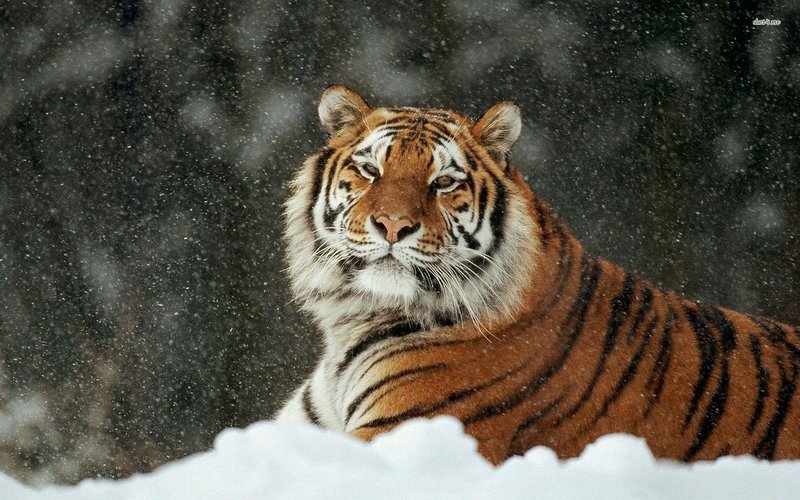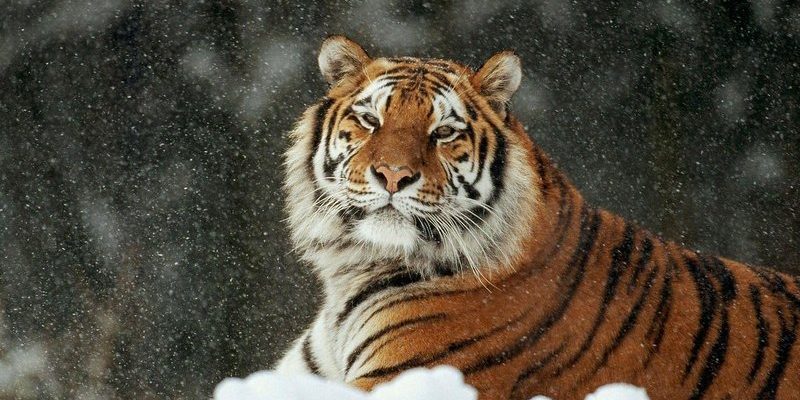
So, let’s dig into some of these common myths about Siberian tigers. Imagine we’re sitting over coffee, and I’m sharing some interesting facts with you. You might be surprised to learn that some of the things you thought you knew about these magnificent creatures aren’t quite accurate. Here’s a chance to set the record straight!
Myth 1: Siberian Tigers Are All Orange
You might be picturing a Siberian tiger bathed in vibrant orange stripes. Here’s the thing: while that’s the most common coloration, it’s not the only one. Siberian tigers can also have a slightly paler coat, especially in winter. This lighter shade helps them blend into the snowy landscape, a bit like how we wear lighter clothes in the summer to stay cool.
Moreover, there are rare cases of Siberian tigers with a condition known as leucism, which can result in a white or cream-colored coat. These tigers are not albino and may have some pigmentation in their fur.
Additionally, the fur color can change slightly due to factors like age, health, and environmental conditions. So, while the striking orange might be their signature look, Siberian tigers can surprise you!
Myth 2: Siberian Tigers Are the Largest Tigers
Many believe that Siberian tigers hold the title for the largest tiger species. Though they are indeed massive, they aren’t the biggest. That title goes to the Bengal tiger. While Siberian tigers typically weigh between 400 to 600 pounds, Bengal tigers can reach similar sizes or even larger in some cases.
Let me explain further. Siberian tigers have adapted to colder climates, developing a thicker coat and larger paws, but their overall size can vary depending on their habitat and available food sources. In fact, some Bengal tigers can weigh over 600 pounds, especially in regions where prey is abundant.
So, in terms of weight and size, Siberian tigers are impressive but share the spotlight with their Bengal cousins.
Myth 3: Siberian Tigers Are Solitary Creatures
While it’s true that Siberian tigers love their alone time, they aren’t as solitary as many think. They’re quite social in their own way! Tigers often establish territories that can overlap with others. Males, for instance, might share territories with females to ensure reproduction. Think of it this way: just because someone prefers to work independently doesn’t mean they don’t appreciate a good team every now and then!
Siberian tigers do have social interactions, particularly during mating season or when a mother is raising her cubs. Interestingly, these cubs will stay with their mothers for about two years, learning crucial survival skills before heading out on their own.
So, while they are technically solitary by nature, Siberian tigers do enjoy some social connections!
Myth 4: Siberian Tigers Only Live in Siberia
It’s a common misconception that these majestic cats are exclusive to Siberia, but the truth is more varied. Siberian tigers have historically roamed across various parts of eastern Russia, but their range extends into parts of China as well.
These tigers prefer dense forests and mountainous areas that provide good cover for hunting. The Amur tiger, as it’s also known, has adapted to live in these cold environments, but due to habitat loss and poaching, their territory has shrunk significantly.
So, while the name “Siberian tiger” might suggest a one-horse town, these tigers have a broader regional significance and face challenges across their range that can impact their survival.
Myth 5: Siberian Tigers Are Aggressive Toward Humans
You might think that a creature as powerful as a Siberian tiger would be always on the hunt for humans. But honestly, that’s not the case. Most of the time, these magnificent animals prefer to keep their distance from people.
Wild Siberian tigers generally avoid human interaction and would rather hunt deer or boar than engage with humans. Conflicts typically arise when their habitats overlap with human settlements, leading to confrontations, but it’s not because they’re inherently aggressive. It’s more about survival—these tigers are simply trying to find food or protect their territory.
Understanding this can help shift the narrative from one of fear to one of respect. After all, these creatures are as much a part of the ecosystem as we are, and finding ways to coexist peacefully is vital.
Myth 6: Siberian Tigers Are Just Big Cats
Here’s the thing: while Siberian tigers share a lineage with domestic cats, they are far more complex. The differences between them are like comparing a sports car to a family sedan. Both have their strengths, but they’re designed for very different purposes!
Siberian tigers are apex predators, meaning they sit at the top of the food chain in their environment. They possess hunting techniques and physical attributes that domestic cats simply don’t, such as powerful muscles, strong jaws, and a keen sense of their surroundings. Additionally, their social behaviors, territorial instincts, and communication methods are tackled differently compared to house cats.
So, while Siberian tigers may seem like just larger versions of our feline friends, they are incredibly unique and specialized in their roles within nature.
Myth 7: Siberian Tigers Are Not Endangered
It’s easy to think that because Siberian tigers are iconic and often portrayed as powerful creatures, they might be thriving. However, this couldn’t be more wrong. The Siberian tiger is classified as endangered, with estimates suggesting there are only about 400 to 500 individuals left in the wild today.
Habitat loss due to logging, agriculture, and urban development has significantly reduced their range. Additionally, poaching and illegal wildlife trade remain serious threats. Environmental changes caused by climate change also play a role in reducing the prey available for these big cats.
It’s heartbreaking to think that such magnificent creatures are on the brink. Conservation efforts are underway, but they need all the help they can get. You might find it eye-opening to know that every tiger saved can help maintain the balance of their ecosystem, making it crucial for us to support these efforts.
In Conclusion
Siberian tigers are majestic animals that carry with them a heavy cloak of myths and misconceptions. By uncovering the truth behind these common beliefs, we can better appreciate their place in the world and the importance of conserving their species.
The next time you hear someone mention Siberian tigers, you can share some of these insights over coffee, helping to shed light on the true nature of these incredible creatures. They deserve our respect, admiration, and most importantly, our efforts to ensure their survival in the wild. Let’s work together to cherish and protect them!

